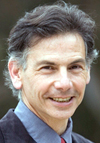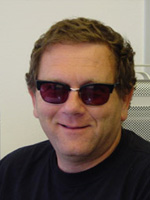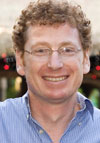-

Jewish Studies Director
Professor
Yale School of Drama
Department of Theater and Dance
Office: GH 309
Phone: 858-534-8597
Email: ahavis@ucsd.eduhttps://theatre.ucsd.edu/people/faculty/playwriting/allan-havis.html
-

Professor and Endowed Chair in Judaic Studies
Stanford University, 2004Department of Literature
Office: Arts and Humanities Building, room 347
Phone: (858) 534-3809
Email: amglaser@ucsd.eduhttps://literature.ucsd.edu/people/faculty/aglaser.html
Amelia Glaser is professor of Slavic and comparative literature and holds the endowed chair in Judaic Studies. Her work focuses on Jewish-Slavic literary exchange, and she has written extensively on Russian, Yiddish, and Ukrainian literature from the nineteenth century to the present. She is the author of Jews and Ukrainians: From the Shtetl Fair to the Petersburg Bookshop (Northwestern U.P., 2012), and Songs in Dark Times (Harvard U.P., 2020); the editor of Stories of Khmelnytsky: Competing Literary Legacies of the 1648 Ukrainian Cossack Uprising (Stanford U.P., 2015) and, with Steven Lee, Comintern Aesthetics, and the translator of Proletpen: America's Rebel Yiddish Poets (Wisconsin U.P., 2005). She is currently the associate director of the Institute for Arts and Humanities.
-

Tal Golan
Associate Professor
Department of History
Phone: 858-534-3883
Email: tgolan@ucsd.edu -

Eli Berman
Professor
Department of Economics
Phone: 858-534-2858
Email: elberman@ucsd.eduhttps://economics.ucsd.edu/faculty-and-research/faculty-profiles/berman.html